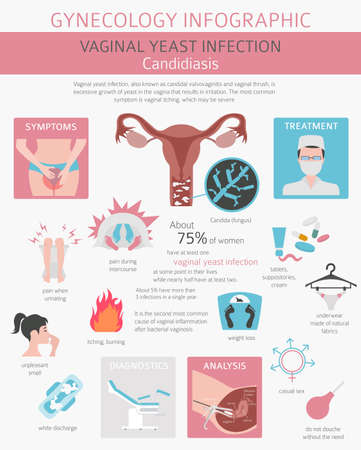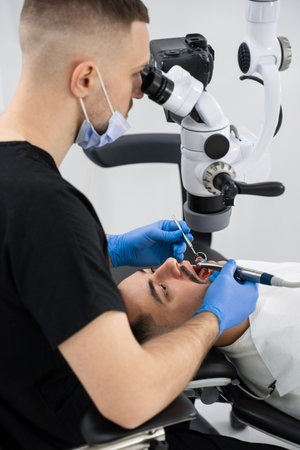Understanding Hyperpigmentation and Its Causes
Hyperpigmentation is a common skin concern that affects people of all ages and backgrounds across the United States. Simply put, hyperpigmentation occurs when patches of skin become darker than the surrounding areas due to excess melanin production. For many Americans, this can be frustrating—not just for cosmetic reasons, but also because it often signals underlying skin issues.
There are several factors that commonly contribute to hyperpigmentation in the U.S. The most prevalent cause is sun exposure, as ultraviolet (UV) rays stimulate melanin production, leading to sunspots or age spots. Acne scars are another frequent culprit; after blemishes heal, they can leave behind stubborn dark marks known as post-inflammatory hyperpigmentation. Aging also plays a significant role, with many noticing increased discoloration as they get older due to cumulative sun exposure and slower cell turnover.
When we talk about types of pigmentation issues, it’s helpful to know the differences. Melasma presents as larger brown patches, often triggered by hormonal changes like pregnancy or birth control use. Lentigines—commonly called liver spots or sunspots—are linked to chronic sun damage over the years. Post-inflammatory hyperpigmentation, as mentioned earlier, appears after injury or inflammation such as acne or eczema.
Understanding what causes your particular type of hyperpigmentation is key to finding the right treatment approach. In the following sections, we’ll explore how laser treatments can target these common pigmentation problems and what you should consider before deciding if this option is right for you.
2. How Laser Treatments Work for Hyperpigmentation
Laser treatments have become a popular option in the U.S. for addressing hyperpigmentation, including dark spots and uneven skin tone. These procedures use focused beams of light to target and break down excess melanin—the pigment responsible for discoloration—within the skin. Here’s a closer look at how this technology works and the most common types of lasers used in American clinics.
Understanding the Basics of Laser Technology
Lasers emit specific wavelengths of light that are absorbed by pigmented areas in the skin. The energy from the laser heats and destroys the melanin-containing cells without significantly harming the surrounding tissue. Over time, your body naturally eliminates these damaged cells, leading to a more even complexion.
Common Types of Lasers Used in U.S. Clinics
There are several different lasers used for treating hyperpigmentation, each with its own strengths and considerations. The choice depends on your skin type, the type and depth of pigmentation, and your treatment goals.
| Laser Type | How It Works | Typical Uses | Suitability |
|---|---|---|---|
| Q-switched Nd:YAG | Delivers short pulses to break up pigment particles | Treats freckles, sun spots, and melasma | Suitable for most skin types, including darker tones |
| Pulsed Dye Laser (PDL) | Targets blood vessels and some pigmented lesions with yellow light | Treats redness, rosacea, and some brown spots | Best for lighter skin tones; caution with darker skin |
| Fractional Lasers (e.g., Fraxel) | Treats fractions of skin at a time, promoting new collagen growth | Treats sun damage, age spots, and acne scars | Effective for many skin types but may require downtime |
| Ablative Lasers (CO2, Er:YAG) | Removes outer layers of skin to reveal fresh tissue underneath | Treats deeper pigmentation and texture issues | Mainly for lighter skin tones due to risk of post-inflammatory pigmentation in darker skin |
The Importance of Professional Assessment
Since not all lasers are suitable for every skin tone or pigmentation concern, a board-certified dermatologist or licensed laser specialist will evaluate your unique needs before recommending a specific treatment plan. They’ll consider factors like your medical history, lifestyle, and long-term goals to ensure you get safe and effective results tailored just for you.

3. Pros of Laser Treatments
Laser treatments for hyperpigmentation have gained significant popularity across the U.S. skincare community for good reasons. One of the most notable advantages is their effectiveness—many patients see noticeable improvement in stubborn dark spots and discoloration that haven’t responded to topical products or chemical peels. Lasers work by targeting melanin directly, breaking up pigment beneath the skin’s surface without causing excessive damage to surrounding tissue.
Another major benefit is the speed of results. Compared to traditional methods, laser treatments often deliver visible changes within a few sessions, sometimes as early as the first or second appointment. This quick turnaround can be especially appealing if you have an important event coming up or simply want faster progress.
Laser technology also allows for precise targeting of specific areas, making it ideal for treating isolated spots like sunspots, age spots, or post-acne marks. Providers can customize the treatment according to your unique skin concerns and tone, which minimizes risks and maximizes outcomes.
Finally, lasers have become a mainstay in American dermatology offices and med spas, reflecting their widespread trust and acceptance. With advances in technology and provider training, these treatments are now safer and more accessible than ever before—making them a preferred choice for many seeking to achieve clearer, more even-toned skin.
4. Cons and Potential Risks
While laser treatments for hyperpigmentation offer impressive benefits, it’s important to understand the potential drawbacks and risks involved. Being aware of these can help you make an informed decision and set realistic expectations.
Possible Drawbacks and Side Effects
Laser procedures, though generally safe, are not without side effects. Some common issues American patients report include:
- Redness and Swelling: Temporary redness or swelling in the treated area is typical and usually subsides within a few days.
- Discomfort: Mild stinging or burning sensations during or after treatment are possible. Providers often use cooling devices or numbing creams to reduce discomfort.
- Skin Sensitivity: Treated skin may feel more sensitive to sunlight, requiring diligent sun protection to avoid further pigmentation problems.
- Pigment Changes: In rare cases, laser treatment can lead to hypopigmentation (light spots) or hyperpigmentation (dark spots), especially in individuals with darker skin tones.
- Scarring and Infection: Though uncommon, improper aftercare or aggressive settings can increase the risk of scarring or infection.
Cost Considerations
The price of laser treatments varies widely in the U.S. based on location, provider expertise, and type of laser used. It’s also important to note that most insurance plans do not cover cosmetic procedures like laser therapy for pigmentation.
| Treatment Type | Average Cost per Session (USD) | Sessions Needed |
|---|---|---|
| PicoSure/Picosecond Lasers | $400 – $1,200 | 2-5 |
| Fraxel/Resurfacing Lasers | $700 – $1,500 | 2-4 |
| IPL (Intense Pulsed Light) | $300 – $600 | 3-6 |
Total costs add up quickly since multiple sessions are often necessary for optimal results. Be sure to discuss package pricing or payment plans with your provider.
Points to Be Aware Of for American Patients
- Selecting a Qualified Provider: Choose board-certified dermatologists or licensed professionals experienced with lasers for diverse skin types.
- Cultural Skin Differences: Those with darker skin tones may need special consideration due to higher risks of pigment changes—ask about lasers designed specifically for your skin type.
- Downtime: Some treatments require recovery time away from work or daily activities. Discuss your schedule with your provider beforehand.
- Lifestyle Adjustments: Strict sun avoidance is crucial post-treatment; wearing broad-spectrum sunscreen daily is non-negotiable.
- Realistic Expectations: Results can vary—some pigmentation may persist or require maintenance sessions.
If you’re considering laser treatment for hyperpigmentation, consult with a trusted skincare professional to weigh these factors carefully and ensure your safety and satisfaction throughout the process.
5. What to Expect Before, During, and After Treatment
Step-by-Step Guide: Navigating Your Laser Treatment Journey
If you’re considering laser treatments for hyperpigmentation in the U.S., knowing what to expect at each stage can help you feel confident and prepared. Here’s a breakdown of the typical process, from your first consultation to post-care tips.
Consultation: Setting Expectations with Your Provider
Your journey begins with an in-depth consultation with a board-certified dermatologist or licensed laser technician. During this visit, you’ll discuss your skin type, medical history, and pigmentation concerns. Your provider will assess whether you’re a good candidate for laser treatment and explain the most suitable options based on your unique needs. This is also the time to ask about potential risks, costs (since cosmetic procedures are often not covered by insurance), and expected outcomes.
Preparation: Getting Ready for Your Session
Once you’ve decided to proceed, your provider will give you clear pre-treatment instructions tailored to American clinical standards. These may include avoiding sun exposure, tanning beds, and certain skincare products (like retinoids) for 2-4 weeks before your session. You might also be asked to pause medications that increase photosensitivity. Arrive at your appointment with clean skin—free of makeup, lotions, or fragrances—to minimize irritation and enhance results.
The Procedure: What Happens During Treatment
On the day of your procedure, you’ll be guided through every step. Protective eyewear is provided for safety, and a topical numbing cream may be applied to maximize comfort. The provider will use a handheld laser device targeting pigmented areas; sensations can range from mild warmth to a slight snapping feeling against the skin. Most sessions last between 20-45 minutes depending on the area treated.
Post-Care Tips: Supporting Recovery & Results
After your session, it’s normal to experience redness or mild swelling similar to a sunburn—this usually subsides within a few days. You’ll receive detailed aftercare instructions designed for American patients, such as:
- Avoiding direct sun exposure and using broad-spectrum SPF 30+ sunscreen daily
- Applying gentle moisturizers and avoiding harsh exfoliants until healed
- Resuming normal activities but skipping intense workouts for 24-48 hours
- Watching for any signs of unusual discomfort and contacting your provider if needed
Remember:
Optimal results typically require multiple sessions spaced several weeks apart. Consistent follow-up and adherence to post-care guidelines are key to achieving clearer, more even-toned skin while minimizing side effects.
6. Is Laser Treatment Right for You?
Choosing the right approach for hyperpigmentation can be overwhelming, especially with so many options available in the U.S. market. Laser treatments are effective for many people, but they’re not a one-size-fits-all solution. Here’s some guidance to help you decide if laser therapy is a good fit for your skin and needs.
Who Makes an Ideal Candidate?
Laser treatments generally work best for individuals with lighter skin tones (Fitzpatrick skin types I-III), as there is less risk of post-inflammatory hyperpigmentation or scarring. However, advances in technology mean that certain lasers, such as Nd:YAG and picosecond lasers, can now be safer options for darker skin tones as well. You may be a good candidate if you have:
- Persistent dark spots that haven’t responded well to topical treatments
- Realistic expectations about results
- No active infections or open wounds on the treatment area
- A willingness to follow aftercare instructions closely
Questions to Ask Your U.S.-Based Dermatologist
Before proceeding, schedule a consultation with a board-certified dermatologist who has experience treating hyperpigmentation in patients with your specific skin type. Consider asking these questions:
- Which type of laser do you recommend for my skin tone and pigmentation type?
- How many sessions will I likely need?
- What are the potential side effects or risks specific to my skin?
- What kind of downtime should I expect?
- Are there before-and-after photos of patients with similar concerns?
Alternatives to Laser Treatments
If laser therapy isn’t the best option for you—whether due to cost, potential risks, or your unique skin profile—there are several alternatives widely available across the U.S.:
- Chemical peels: These use acids to gently exfoliate the top layer of skin and lighten pigmentation over time.
- Topical agents: Ingredients like hydroquinone, retinoids, vitamin C, and azelaic acid can gradually fade dark spots.
- Microneedling: This minimally invasive treatment stimulates collagen production and can improve pigmentation issues.
Your Path Forward
The most important step is consulting a trusted skincare professional who understands your goals and your unique skin needs. With personalized advice and the right treatment plan—laser or otherwise—you’ll be on your way to healthier, more even-toned skin.

